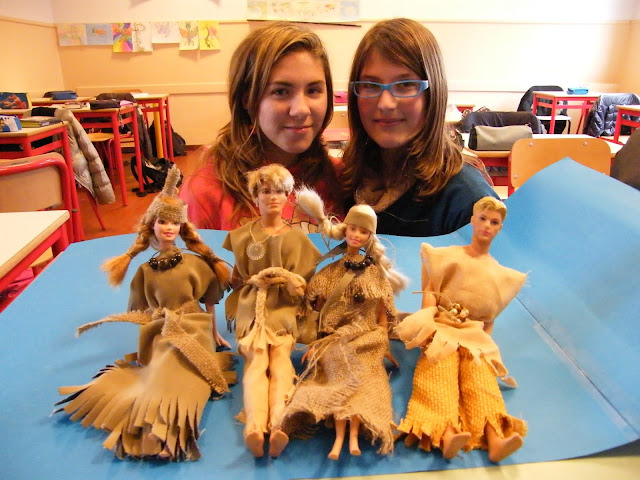THE RAIN DANCE
The Native American rain dance was very common among the Native American tribes in the southwest of America, because during the summers there wasn’t much rain.
The rain dance usually took place in August ever year.
Men and women danced it, and they wore special costumes when performing this ceremony.
Many reservations in the southwest still perform this ritual today.
THE TOMAHAWKS
They were war weapons for many of the more violent Indian tribes, and they used their tomahawks to scalp their enemies.
But they were also tools and they were sometimes given as gifts to important people during special ceremonies.
THE TOTEM POLES
The totem poles were symbols of the history of a family or of the whole tribe.
They were also a record of traditions, legends, or spiritual stories.
They were carved from large pieces of wood and covered with pictures of animals. They were also used as memorials when a tribe’s chief died.
THE HEADDRESS
The Native American Headdress was reserved for the very important members of the tribe. They were beautiful and intricate, colourful or monochromatic, often made out of bird feathers.
The number of feathers a headdress had on it symbolized how brave or important the member of the tribe was.
Today, many Native Americans wear headdresses during special ceremonies such as weddings and other important events.
NATIVE AMERICAN NAMES
Native American names are more than just a simple way to address one another. In fact, like many other cultures, Native American had a systematic way of naming people. Native American names were given to imply status, class, and occupation.
They often had several names over their lifetime. This is because names were used to describe a man or woman’s life. They were used to classify actions they took, physical traits, personality characteristics, and other important aspects of their lives.
The names were often presented to the tribe in the form of a ceremony. There was a celebration that included dancing, singing, and praying to honor the name given to a member of their tribe.
Native Americans believed firmly that their actions shaped their destiny. Therefore being named after their actions in life was a great honor.
THE DREAM-CATCHERS
According to the Native American people, dreams are messages that come from the sacred spirits. There are different stories on the Native American dream catchers: one version says that the hole in the middle of a dream catchers allows the good dreams to pass on to the sleeper, while the web traps all of the bad dreams, and then at the first light of morning the bad dreams disappear.
Dream catchers originated with the Chippewa Indians. They used to tie strands of sinew in webs around a tear-shaped frame and then they hung the dream catcher above sleeping Native American children’s bed to protect them from nightmares.
Normally Native American dream catchers are fairly small and are made by bending wood (originally birch) and sinew string tied together. A feather hangs from the webbing.
(by 2LSB & 2LSA)
















































